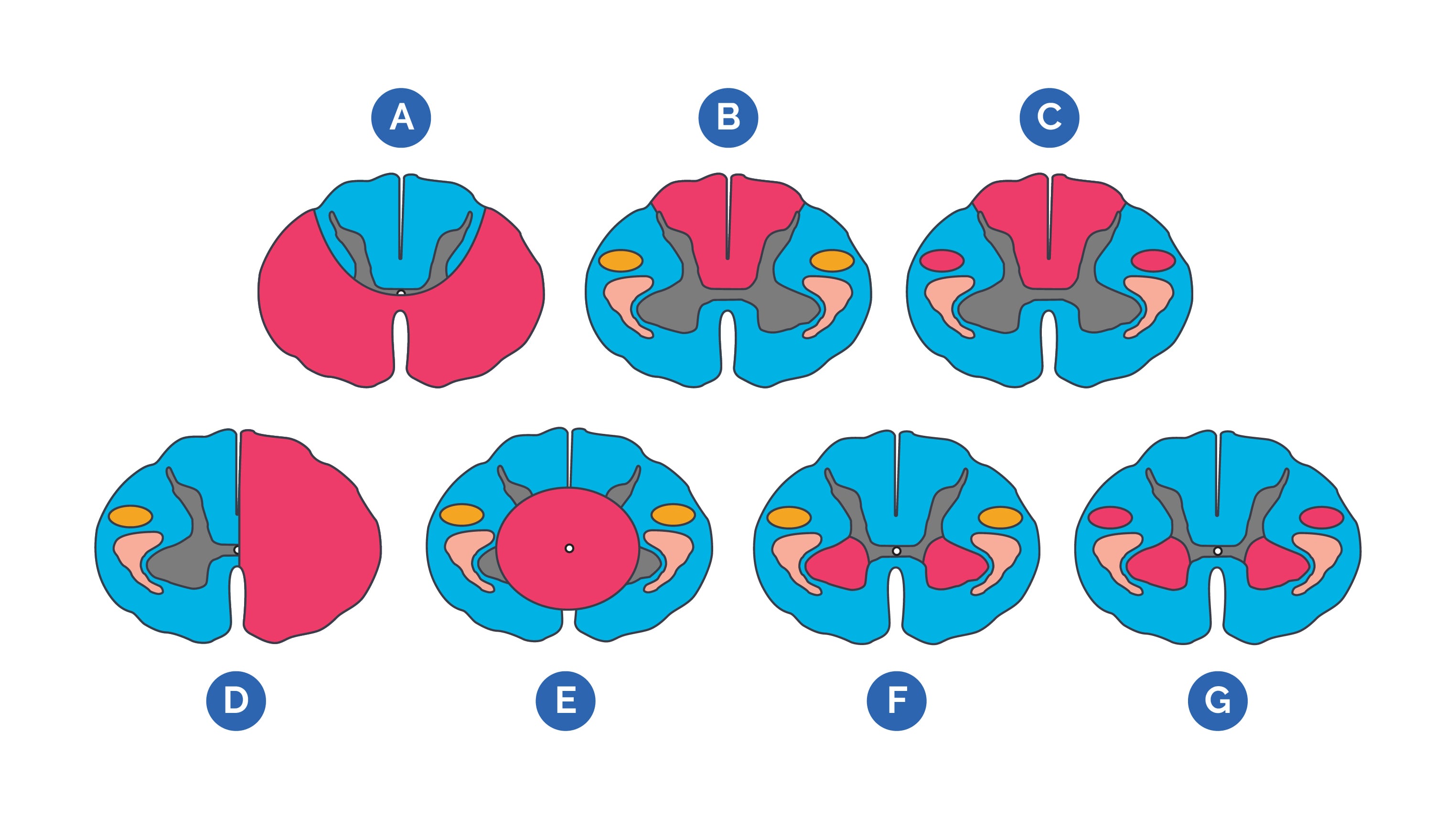(I) Vertebral artery dissection: It is characterized by tear in the vascular wall leading to intrusion of blood within the wall layers forming a haematoma which causes narrowing of the vessel lumen and ischemia. It is a common cause of stroke in younger age groups including children. Many patients have weak arterial walls resulting from Ehlers-Danlos syndrome, Marfan’s syndrome, ADPKD and osteogenesis imperfecta type I. Mechanical stress on the neck as in some types of yoga, painting a ceiling, chiropractic manipulation of the neck etc have been associated with vertebral artery dissection. Some cases have a history of respiratory viral infection. It can be either ischemic type manifesting with symptoms of vertebrobasilar system infarction or hemorrhagic type presenting as subarachnoid hemorrhage. The vertebral artery is most mobile and thus most vulnerable to mechanical injury at C1 to C2 as it leaves the transverse foramen of the axis vertebra and suddenly turns to enter the intracranial cavity. It presents with severe neck pain followed by dizziness, vertigo, double vision, ataxia, dysarthria with lateral medullary syndrome and cerebellar infarction. Angiography shows “string sign”-a long segment of narrowed lumen, intimal flap or a double lumen, aneurysmal dilatations and the artery may show sudden tapering because of occlusion of the lumen.
(II) Spinal artery thrombosis/embolism: It is caused in adults due to atherosclerotic disease, thoracoabdominal aneurysms, aortic surgery, hypotension, diving, sickle cell anemia, coagulopathies and spinal arteriovenous malformations. In children cardiac defects and trauma are the leading causes. It can clinically present as the anterior or posterior spinal artery syndrome.
(III) Spinal cord compression: Compression of the spinal cord can occur due to trauma, vertebral compression fractures, disk herniation, infection and primary or metastatic tumors. Lung, breast, prostate and renal cancer metastases commonly cause cord compression. Acute cord compression is a medical emergency. Cord compression presents with paresis, sensory changes or loss of sensation, bowel-bladder sphincter dysfunction and erectile problems. Treatment includes administration of corticosteroids, radiation therapy, surgery, and chemotherapy.
(IV) Hemisection of the spinal cord or Brown-Sequard syndrome: It is usually caused by trauma, tumors or herniated disc.
Soon after complete or hemisection of the spinal cord, there is a variable period of spinal shock characterized by loss of all reflexes, flaccid paralysis, loss of all sensations below the level of the lesion.
(V) Spinal stenosis (cervical, lumbar): Spinal stenosis is narrowing of the spinal canal. It results from acquired degenerative changes (spondylosis), although congenital stenosis is sometimes seen. Other causes include osteoarthritis , tumors, rheumatoid arthritis, trauma, achondroplasia and Paget’s disease. Spinal stenosis can involve the cervical, thoracic (rarely), or lumbar spine. Cervical or thoracic spinal stenosis can cause both root and/or cord compression, resulting in pain, radiculopathy, myelopathy, or myeloradiculopathy. Lumbar spinal stenosis causes only root compression, with typical complaints of neurogenic claudication or radicular leg pain. Neurogenic claudication consists of pain in the buttocks or legs, typically aggravated by walking, standing, climbing stairs or uphill, and alleviated by sitting or bending forward (lumbar flexion). Patients with spinal stenosis may experience numbness, weakness, and loss of reflexes.

A. Anterior cord syndrome/infarct
B. Posterior cord syndrome or tabes dorsalis of tertiary syphilis
C. Subacute combined degeneration from B12 deficiency
D. Brown-Sequard cord hemisection
E. Central cord syndrome or syrinx (syringomyelia)
F. Poliomyelitis
G. Amyotrophic lateral sclerosis
(VI) Other important lesions involving the spinal cord
| Lesion | Characteristics |
| Syringomyelia | Cavitation of central canal of the spinal cord, most common in cervical canal; bilateral loss of pain and temperature (cape like distribution) at or just below the level due to compression of crossing spinothalamic fibres in ventral commissure; CSF filled cavity called syrinx; as syrinx expands, increased compression causes LMNs and ventral horns symptoms such as flaccid paralysis of upper limbs; Horner’s syndrome. |
| ALS (amyotrophic lateral sclerosis) or Lou-Gehrig’s syndrome | Affects both UMNs and LMNs; either upper or lower limb involvement; cranial nerve nuclei may be involved; cervical lesions present with flaccid weakness of upper limbs and spastic weakness of lower limbs; difficulty swallowing and speaking; respiratory failure in phrenic nerve involvement |
| Werdnig-Hoffmann disease or infantile spinal muscular atrophy | Destruction of LMNs in infants and young children, difficulty sucking, swallowing, breathing, limb weakness, “floppy babies”, symmetric involvement |
| Poliomyelitis | Flaccid paralysis, hyporeflexia, fasciculations, muscle atrophy, loss of LMNs in ventral horn, asymmetric involvement |
| Tabes dorsalis (neurosyphilis) | Bilateral degeneration of large diameter dorsal root fibres and their cell bodies in dorsal root ganglion, degeneration of dorsal columns esp. Fasciculus gracilis;pain, paresthesias and polyuria |
| Subacute combined degeneration | Degeneration of dorsal columns and corticospinal tracts; bilateral spastic paresis, bilateral numbness, gait disturbances, loss of touch, pressure, vibration senses below the level of lesion; peripheral neuropathy with paresthesias; Causes are Vit B12, Vit E (also involves spinocerebellar tract), copper and folic acid deficiency. |
Sign up for free to take 4 quiz questions on this topic